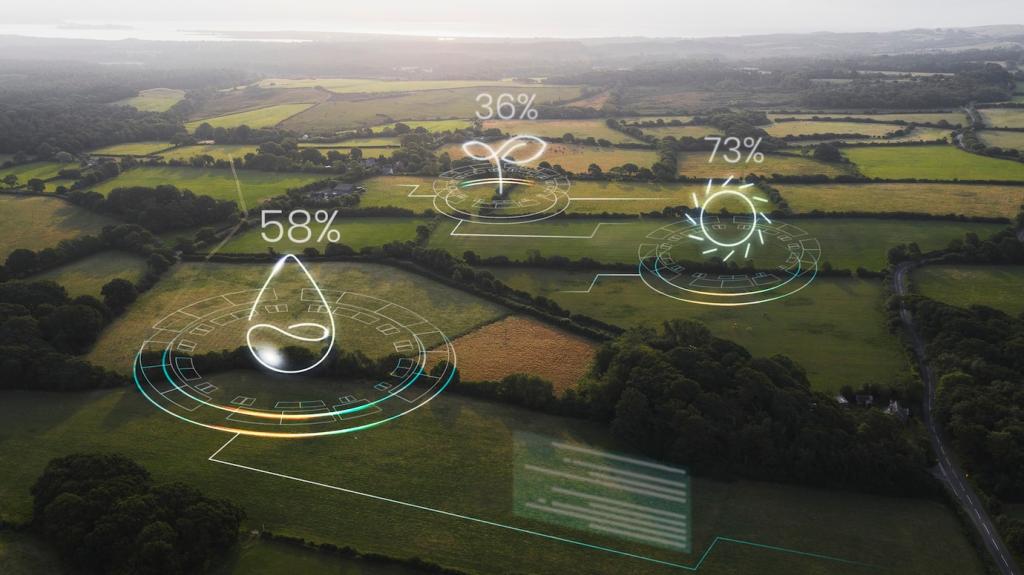
Eco-Friendly Home Automation Solutions
Discover the future of sustainable living with eco-friendly home automation solutions designed to minimize environmental impact while maximizing comfort and efficiency. These innovative systems seamlessly integrate intelligent technologies into your living space, providing a smarter, greener way to manage your home. Embracing automation for everyday tasks not only reduces energy consumption and costs but also supports a healthier planet. From advanced lighting controls to intelligent heating and cooling, eco-friendly home automation empowers homeowners to adopt a more responsible lifestyle without compromising on convenience or modern amenities.
Smart Lighting for Energy Efficiency
Automated dimming and scheduling features allow homeowners to tailor their lighting to suit their routine effortlessly. With intelligent scheduling, lights turn off automatically during daylight hours or when certain rooms are unoccupied, which drastically curbs energy waste. Dimming capabilities further reduce consumption by decreasing the intensity of bulbs when full brightness is not necessary. The cumulative effect is a noticeable drop in energy usage, translating into lower utility bills and a smaller carbon footprint. Ultimately, the adoption of these features provides a more dynamic and responsive home environment that balances comfort and environmental responsibility.
Occupancy sensors are a cornerstone of energy-conscious lighting. These sensors detect motion within a room and automatically switch lights on or off based on real-time presence, ensuring that illumination is only provided when a space is truly in use. By eliminating the issue of lights being left on unnecessarily, occupancy sensors can drastically reduce wasted electricity. Not only does this make for a more energy-efficient home, but it also enhances convenience by removing the need for manual switches. Over time, these small adjustments contribute significantly to environmental sustainability while maintaining a high standard of living.
Smart bulbs offer unparalleled flexibility for the modern eco-friendly home, allowing residents to control color temperature, brightness, and even set moods through devices or voice commands. Integration with virtual assistants simplifies managing large numbers of bulbs and can be customized to specific needs at different times of the day. These bulbs use LED technology, which is inherently more energy-efficient than traditional lighting methods. Their longevity and adaptability reduce both energy and material waste, supporting sustainability goals. By incorporating user-friendly technology, smart bulbs empower even the busiest households to participate actively in energy conservation efforts.

Intelligent Climate Control
Adaptive Smart Thermostats
Adaptive smart thermostats learn daily routines and adapt climate settings to match the household’s habits. By analyzing patterns and adjusting temperatures automatically, these thermostats minimize unnecessary heating or cooling during periods when rooms are unoccupied. This reduces both energy expenditure and greenhouse gas emissions associated with excessive HVAC use. Over time, the self-learning capability becomes increasingly accurate, fine-tuning your home’s environment for both comfort and sustainability. Intelligent climate control is a key factor in pioneering a greener future and directly supports the ambition for net-zero energy homes.

Water Conservation Technologies
Smart Irrigation Controllers
Smart irrigation controllers revolutionize outdoor water management by adjusting watering schedules based on real-time weather data and soil conditions. Rather than following fixed schedules, these controllers only activate sprinklers when necessary, preventing overwatering and runoff. Homeowners can customize settings to support plants’ needs while being mindful of local drought conditions or water restrictions. This technology ensures lush gardens and healthy landscapes without excessive water use, supporting sustainability on both a small and community scale.
Leak Detection and Prevention
Leak detection systems leverage sensors and automated shut-off valves to catch leaks early and prevent water waste or damage. These smart devices continuously monitor pipes and fixtures for any unusual activity, immediately alerting homeowners and stopping flow if issues are detected. Early leak management reduces the likelihood of costly repairs and extensive water loss. By addressing problems before they escalate, these systems uphold both safety and sustainability, keeping resources in check and protecting property.
Efficient Appliance Integration
Integrating water-efficient appliances into home automation platforms ensures that dishwashers, washing machines, and showers operate at peak efficiency. Automation can restrict water use to off-peak times, track consumption trends, and alert homeowners to abnormal usage, all promoting resource conservation. By replacing old fixtures with high-efficiency models and embedding them in your home’s smart ecosystem, the impact on overall water savings is considerable. These improvements reflect a proactive approach to environmental stewardship within everyday routines.
Renewable Energy Integration
Solar panel automation optimizes the capture and use of solar energy. Smart inverters and trackers adjust the orientation of panels to follow the sun, maximizing energy generation throughout the day. Paired with energy monitoring systems, homeowners receive real-time insights into production and consumption, encouraging thoughtful energy usage. Automated systems can prioritize solar usage when demand is highest or when electricity from the grid is most expensive, making renewable energy adoption more practical and rewarding.


Previous slide
Next slide
Sustainable Everyday Convenience
Green Appliance Management
Automated systems control when and how appliances operate, aligning usage with times of lower energy rates or peak renewable generation. Smart plugs and integrated controllers facilitate remote shut-off to prevent phantom loads, ensuring devices don’t draw unnecessary power on standby. This systemization leads to a more thoughtful consumption pattern, reducing both unwarranted expenses and environmental harm. Green appliance management demonstrates how convenience and sustainability truly can walk hand in hand in modern homes.


Automated Recycling and Composting
Smart recycling and composting solutions simplify sustainable waste management. Automated bins sort recyclables from waste and monitor fill levels, notifying residents when to take action. Composters track temperature and moisture to accelerate breakdown with optimal efficiency, providing nutrient-rich soil with minimal human input. These systems integrate seamlessly into home routines, making environmental stewardship an effortless part of daily living and reducing household contribution to landfills.
Sustainable Materials and Design
01
Eco-Smart Home Hardware
Eco-smart hardware is crafted from recycled or sustainably sourced materials, ensuring devices not only perform efficiently but also minimize their environmental cost. From smart thermostats with bioplastics to switch panels made from reclaimed metals, material choices matter. These devices often require less energy to manufacture and are designed for long term durability, reducing both waste and the need for frequent upgrades. Opting for sustainable hardware supports a circular economy and showcases commitment to holistic green living.
02
Modular and Upgradeable Systems
Designing automation systems to be modular and upgradeable extends the product lifecycle and reduces waste. Components that can be easily swapped out or adapted to new technologies prevent entire systems from becoming obsolete. Homeowners benefit from lower costs and the ability to keep their homes equipped with the latest energy-saving features without significant overhaul. This adaptability makes home automation a sustainable investment that continues to grow in value and performance over time.
03
Minimalist Installation Impact
Automated solutions with wireless technology and compact designs can be installed with minimal impact on existing structures. Less invasive installations reduce construction waste and the need for additional materials, while wireless connectivity eliminates the need for extensive wiring. This approach not only shortens renovation time but also preserves existing resources and underscores sustainability from start to finish. The end result is a smarter, greener home built for lasting efficiency and minimal ecological disruption.
